Back in April, I had the chance to visit several Connecticut wineries and taste the products of others while attending a great workshop hosted by my wine economist colleague Emiliano Villanueva of Eastern Connecticut State University. He is part of a network of economists that collected firm level data on wineries to better map their management practices, including exports and much more. The university was a fantastic host and it was great to learn not just about wine but how one of our neighbors has adapted their public university system.
Our first CT wine tasting, curated by Maureen, the wine maker at Hawk Ridge
Connecticut is a relatively small wine producer, producing around 200,000 gallons in recent years, with most of the wine consumed at or directly from the winery. The climate can be challenging for the production of wine especially vitis vinifera due to rain, a short growing season and humidity, but it it sheltered by Long Island Sound and has three different American Viticultural Areas (Southern New England, shared with parts of Massachusetts and Rhode Island as well as the Eastern Connecticut Highlands and Western Connecticut highlands). Most of the areas are sheltered by lakes, have some elevation changes to allow drainage and diurnal temperature shifts to preserve acidity.
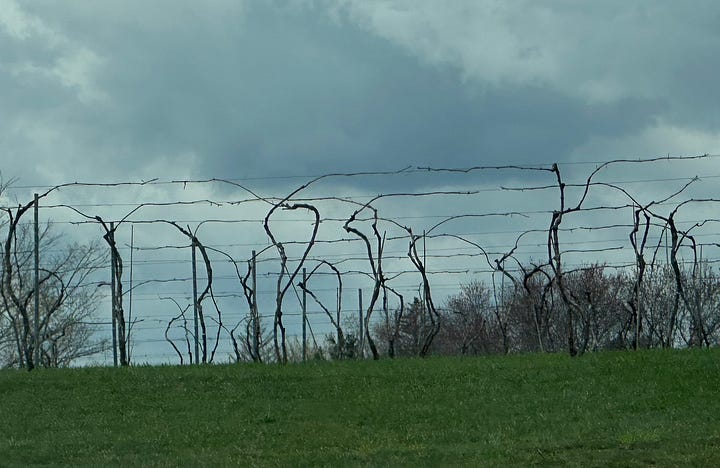

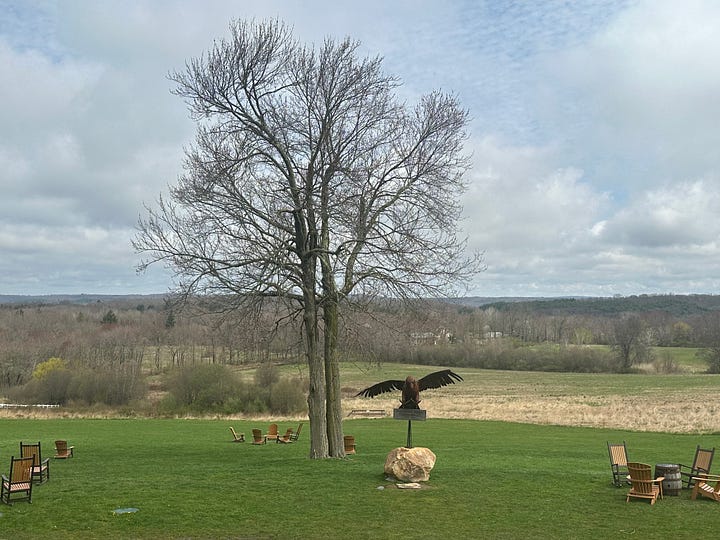
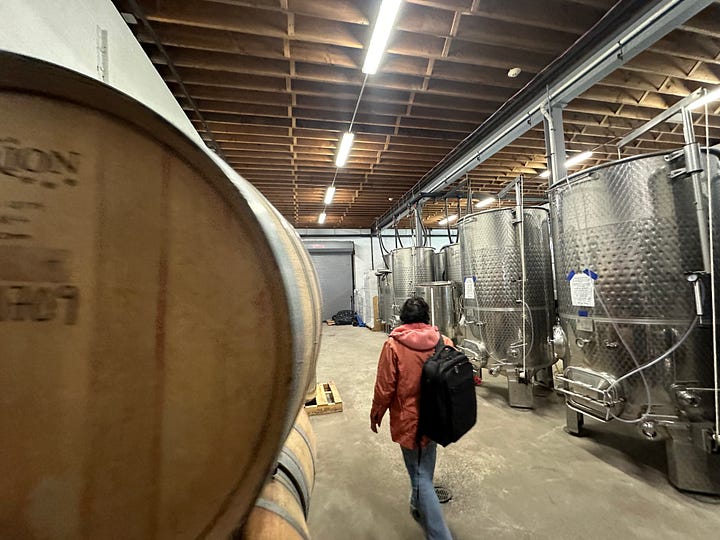
Many of the grapes grown in CT and the ones that produced the wines I found most interesting are hybrids. These include several varietals first crossed in neighboring NY State, especially around Cornell. Cayuga White for one, which could be recognized by its Finger Lakes name and Seyval Blanc, which is well known for sparkling in cooler climate Canada (Nova Scotia, Quebec, among others). These hybrids are robust to the climate and may be resilient to the fungal diseases to which a wet region like Connecticut is prone. Other widely planted wines included Frontenac gris and Frontenac (red), both developed in cool climate Minnesota and used for reds or roses, but I was less convinced about the balance than with some of the Cayuga and Seyval Blanc blends. Wineries also grow vitis vinifera varietals which are more recognizable but some of the wines seemed less distinctive.
Like other smaller wine regions in the US, most wineries import at least a portion of their grapes from elsewhere in the US (California, even NY) or even internationally. One vintner told us about how her wine broker could source grapes from Chile, Argentina or even South Africa. Cold storage delivery has improved but I can’t help but think that the time between harvest and wine making does impair quality. Still many of these wines are drinkable and help the wineries get to their broader business of hospitality.
I found the locally grown, hybrid dominant wines among the most interesting, if primarily because they couldn’t be found elsewhere. Of these generally the whites were better, high acidity balanced by a touch of residual sugar at times. I was less a fan of some of the sweeter roses and some whites, but could see how these could be crowd pleasers for some. The one wine we tasted from the south coast (Stonnington’s Seaport White) have nice touch of salt, and would likely be especially nice drunk near on a sunny day near Long Island sound. But the whites from the highlands had some character too especially some of the Seyval and Cayuga blends. The one Chardonnay we had was a bit foxy, and the Cabernet franc from the northern part of the state more resembled the cooler production from the finger lakes, not surprising given the location and climate alignment even though CT is warmer than upstate New York.
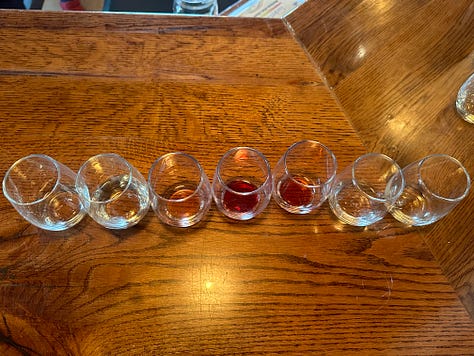
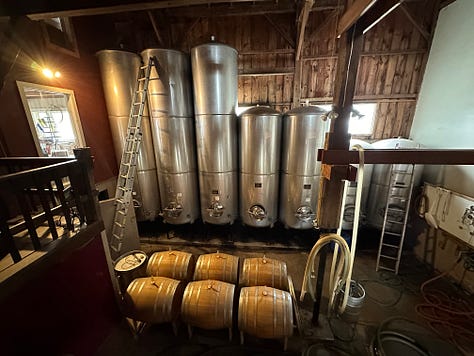
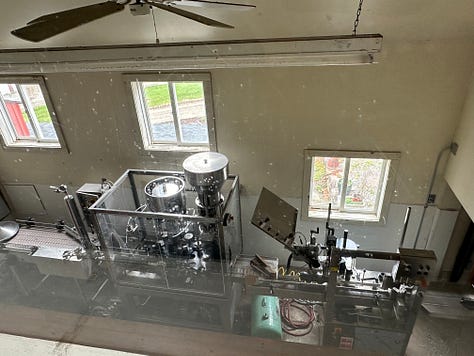
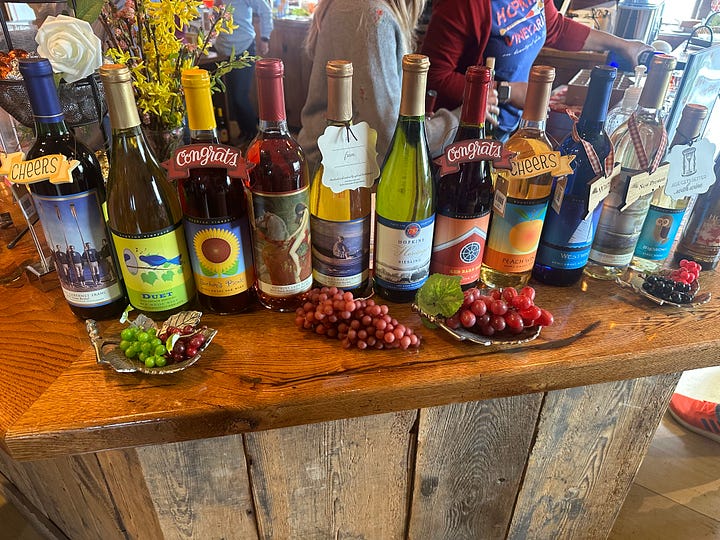

I also tasted some interesting bourbon barrel aged St Croix (Priam Vineyards), not a grape I had tried. It benefited from the extra flavors from the barrel and was a balanced wine with some length. Bourbon barrel aging is a bit of a fad especially for big mid volume California wines. These somehow were more balanced. Even a strawberry infused wine (Jones Winery’s Strawberry Serenade) was interesting and surprisingly good for a desert pairing. A little sweet but not cloying. Also of note, fruit wines including some apple ones fermented fully dry.
Connecticut wineries have tried to encourage new visits by setting up wine trails, and many wineries have tasting rooms and some have attached places to have food as well as events to benefit from tourism and hospitality. However, there isn’t yet a lot of local wine being sold in the population centers in the state, partly due to volume, the less recognized varietals and region. Overall, I’d recommend seeking out the wines when in the area, drinking them young, especially if you’re a fan of crisp wines.
As with other northern regions, Connecticut might be a region that benefits from global warming, as additional heat helps to more steadily ripen the fruit. The challenge may come from frost risk or higher volume summer storms that may damage crops. More protected areas with better drainage or sea breezes may benefit most.
Thanks again to Emiliano, his colleagues, the wineries of Hawk Ridge and Hopkins for helping me learn more about CT wines. I hope to have the chance to come back and try more of products from the many wineries in Connecticut.




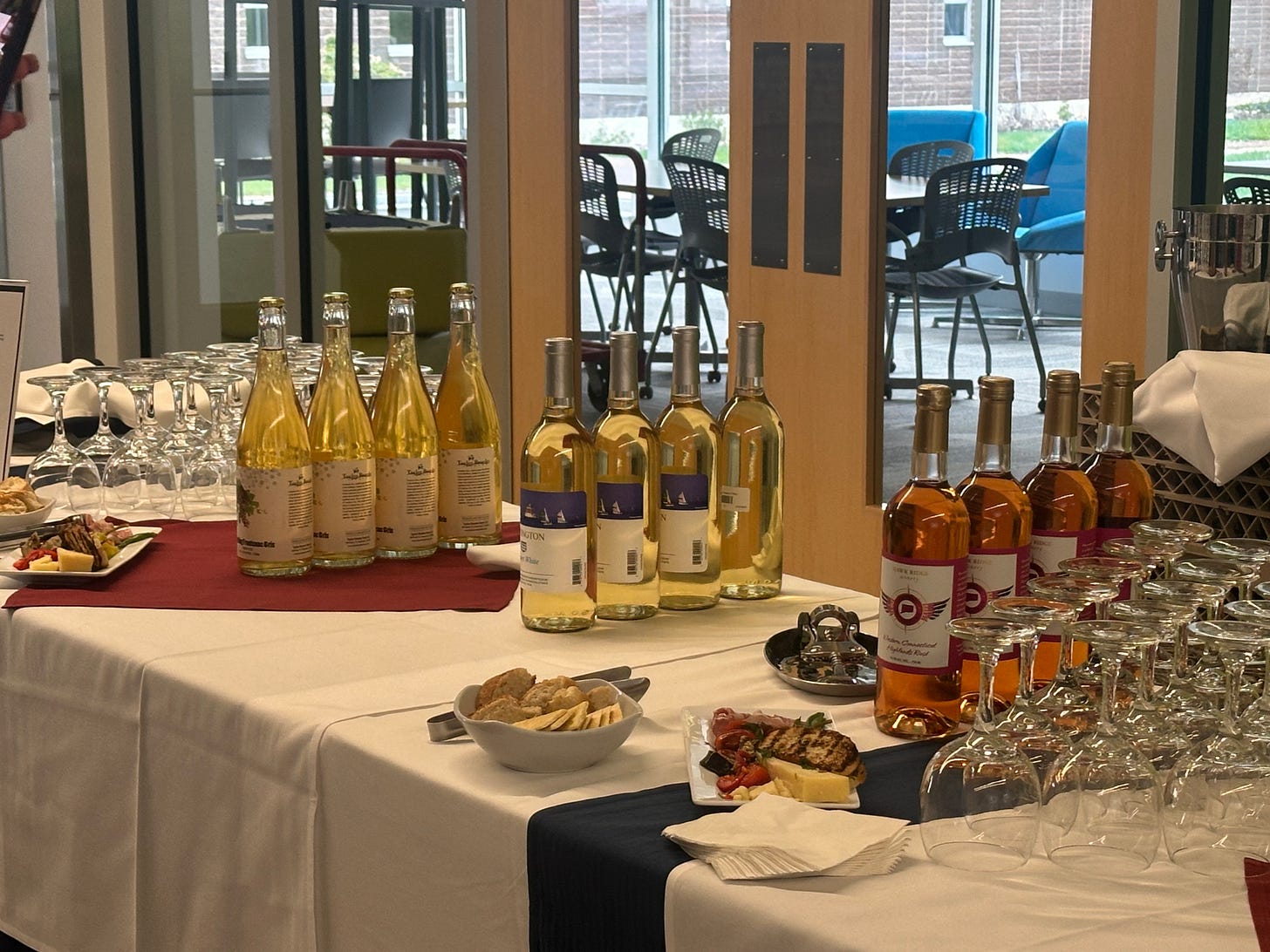

Thanks for the invite and teaching me! Look forward to more NE wine collaborations.
Thanks for visiting us in CT, Rachel. We did enjoy local wines and discussed wine business and economics at a regional, national, and global scale! See you soon.